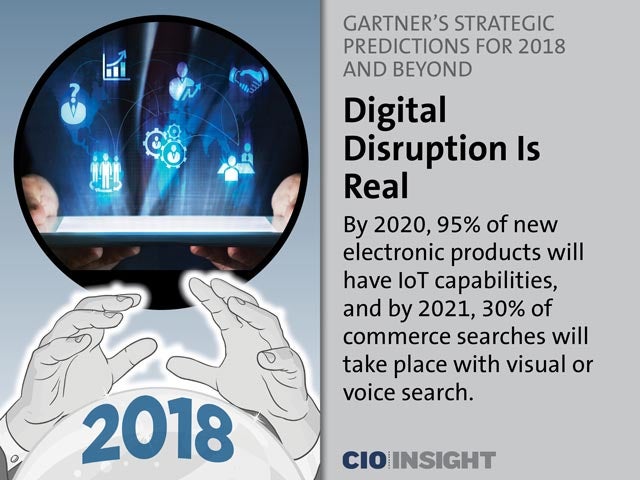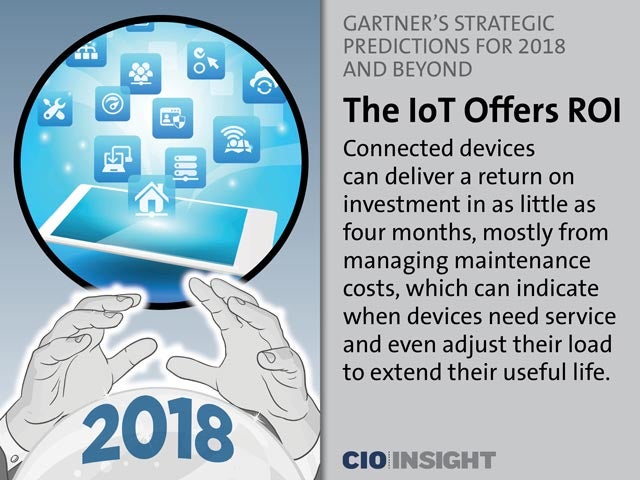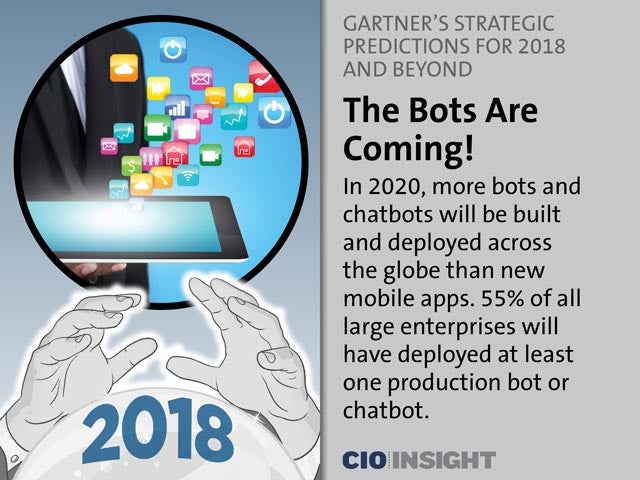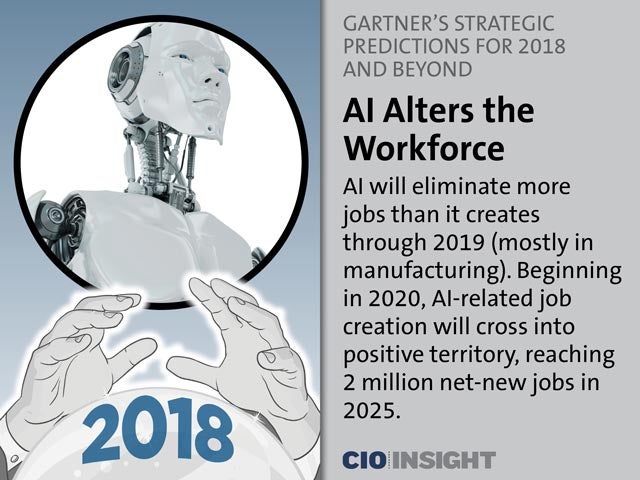
Gartner’s Strategic Predictions for 2018 and Beyond
 Gartner’s Strategic Predictions for 2018 and Beyond
Gartner’s Strategic Predictions for 2018 and Beyond
A Gartner report provides predictions, research findings and recommendations for what to focus on and how to navigate the accelerating rate of digital change.
 Disruptors Disrupt
Disruptors Disrupt
By 2020, 5 out of 7 digital giants will willfully “self-disrupt” to create their next opportunity. They are being proactive by deciding to embrace disruption even if it cannibalizes some existing advantage.
 Digital Disruption Is Real
Digital Disruption Is Real
By 2020, 95% of new electronic products will have IoT capabilities, and by 2021, 30% of commerce searches will take place with visual or voice search.
 A Voice of Reason
A Voice of Reason
By 2019, half of major commerce companies and retailers with online stores will have redesigned their e-commerce sites to accommodate voice searches and voice navigation.
 Blockchain Is Coming
Blockchain Is Coming
By the end of 2018, formal investment frameworks will be available for trading in cryptocurrencies. In addition, Gartner predicts that at least one Tier 1 bank will offer cryptocurrency services.
 The IoT Offers ROI
The IoT Offers ROI
Connected devices can deliver a return on investment in as little as four months, mostly from managing maintenance costs, which can indicate when devices need service and even adjust their load to extend their useful life.
 Deep Insecurities
Deep Insecurities
Through 2022, half of all security budgets for IoT will go to fault remediation, recalls and safety failures rather than protection.
 The Bots Are Coming!
The Bots Are Coming!
In 2020, more bots and chatbots will be built and deployed across the globe than new mobile apps. 55% of all large enterprises will have deployed at least one production bot or chatbot.
 AI Alters the Workforce
AI Alters the Workforce
AI will eliminate more jobs than it creates through 2019 (mostly in manufacturing). Beginning in 2020, AI-related job creation will cross into positive territory, reaching 2 million net-new jobs in 2025.
 Eye on Digital Trust
Eye on Digital Trust
By 2018, there will be a tenfold increase in commercial projects designed to detect fake news. By 2020, Gartner predicts that a major country will pass regulations or laws seeking to curb the spread of false information.
 Recommendations
Recommendations
Create new value scenarios by focusing on people-centric technology options that introduce new ways to engage customers, employees and business partners.
 Recommendations
Recommendations
Formulate data verification initiatives to combat the spread of “counterfeit reality” and fake content.
 Recommendations
Recommendations
Focus on people-centric and business-centric skills within IT staffs.